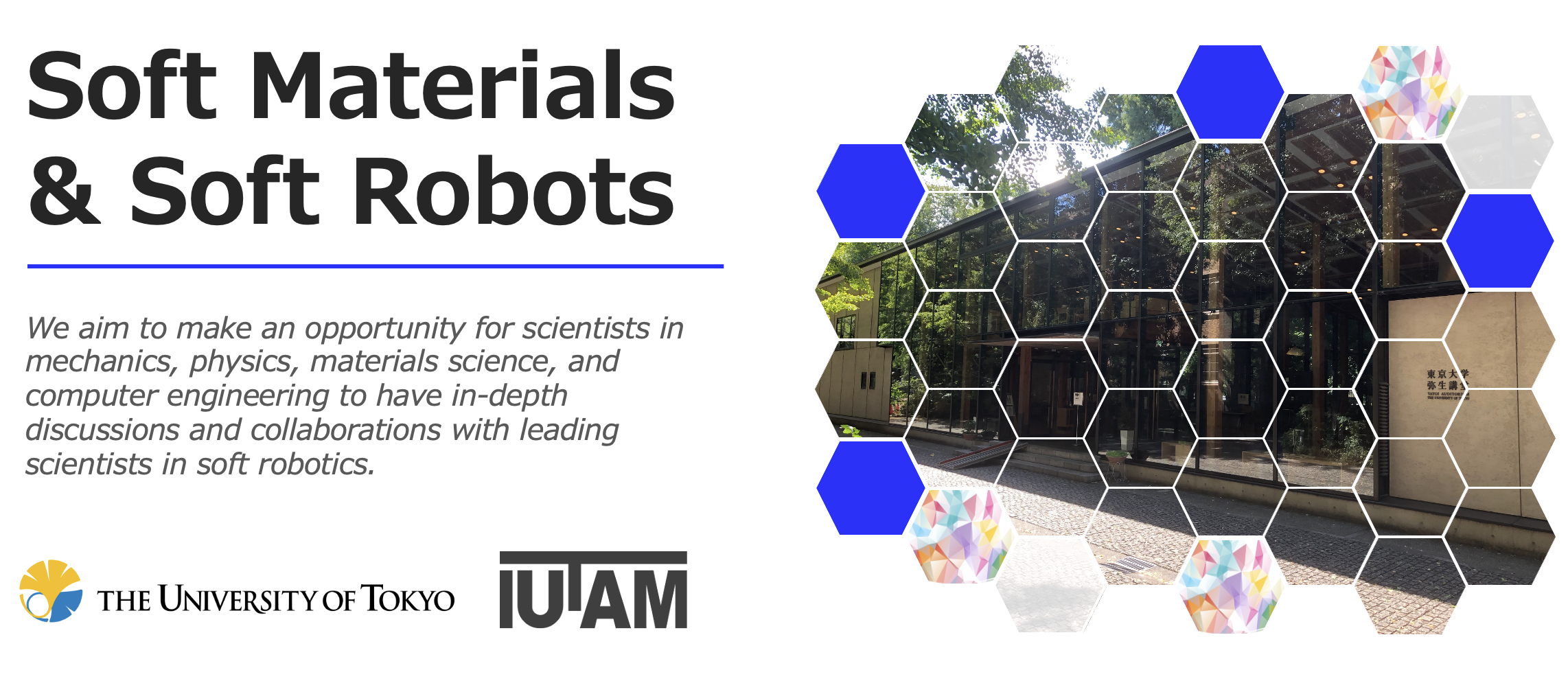Home > Events > Upcoming Symposia >

Soft robotics is an emerging research field where robotics and mechatronics intersect. This symposium aims to make an opportunity for scientists in mechanics, physics, materials science, and computer engineering to have in-depth discussions and collaborations with leading scientists in soft robotics. Unlike conventional (hard) robots, soft robots exploit compliant mechanisms inspired by natural and biological systems, such as plants, insects, invertebrates, and animals. The combination of sensors, actuators, control systems, and material non-linearity enable us to design soft robots with different mechanical functionality. Soft robots work in versatile or even extreme environments and across different length scales, including drug delivery, medical micro-robots, minimally invasive surgery, rescue in disaster areas, and planetary probes in space. Despite their robust and flexible working principle, fundamental challenges remain and need to be addressed in theoretical and applied mechanics. For instance, (i) structures undergo nonlinear and finite deformation, together-with dissipation in multi-body dynamics. (ii) Contact between soft bodies must be predicted upon deformation. (iii) Both theoretical and experimental modeling efforts are crucial for functional materials, such as memory alloys, ferroelectric or magnetic materials, stimuli-responsive hydrogels, (both biological and man-made) active matter, mechanical metamaterials. (iv) Computer simulations including multi-scaled physics or chemical phenomena are essential to building predictive models. (v) Reduced mathematical modeling will rationalize experimental and numerical observations in complex systems. Especially, differential geometry on Riemannian manifolds plays a central role. Most importantly, (vi) the structures need to be geometrically optimized based on the theory of their slender building blocks such as beams, rods, plates, shells, origami, or kirigami. The examples raised above are only some of the aspects. Nevertheless, this brief overview illustrates to us the fact that soft robotics is an active research field that roboticists, mathematicians, material scientists, and mechanicians collaborate, as well as an interdisciplinary research field that robotics, computer science, mechanics, and material science come across. This symposium will cultivate communication among existing soft robotics researchers and bring synergy to solid mechanicians and roboticists. The scientific committee consists of world-leading experts on soft materials, soft robotics, structural optimizations, mechanical metamaterials, and theoretical and applied mechanics of solids. The committee members plan to invite their collaborators or active researchers with closely related backgrounds. This symposium will be held in person.